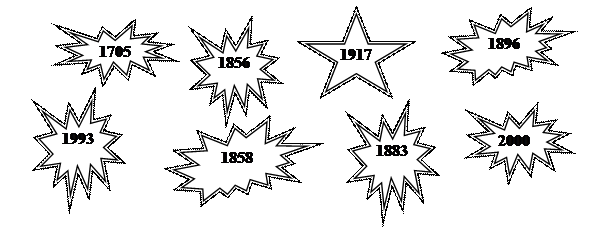
Заглавная страница Избранные статьи Случайная статья Познавательные статьи Новые добавления Обратная связь FAQ Написать работу КАТЕГОРИИ: ТОП 10 на сайте Приготовление дезинфицирующих растворов различной концентрацииТехника нижней прямой подачи мяча. Франко-прусская война (причины и последствия) Организация работы процедурного кабинета Смысловое и механическое запоминание, их место и роль в усвоении знаний Коммуникативные барьеры и пути их преодоления Обработка изделий медицинского назначения многократного применения Образцы текста публицистического стиля Четыре типа изменения баланса Задачи с ответами для Всероссийской олимпиады по праву 
Мы поможем в написании ваших работ! ЗНАЕТЕ ЛИ ВЫ?
Влияние общества на человека
Приготовление дезинфицирующих растворов различной концентрации Практические работы по географии для 6 класса Организация работы процедурного кабинета Изменения в неживой природе осенью Уборка процедурного кабинета Сольфеджио. Все правила по сольфеджио Балочные системы. Определение реакций опор и моментов защемления |
Перепишите предложения, используя конструкцию Complex Subject.Содержание книги
Поиск на нашем сайте
It is known that Peter the Great was proclaimed tsar in April 1682. It is said that Peter the Great was one of enormous strength and energy. It is supposed that Peter the Great was seven feet tall and powerfully built. It appeared that he had been in a constant state of restless activity, taking on himself tasks normally done by several men. It is certain that Peter the Great had some remarkable qualities of mind and character in addition to his extraordinary physical attributes. It seemed that Peter the Great had participated personally in all kinds of state affairs: diplomacy, administration, justice, commerce, industry, education, etc.
5. Прочитайте текст и ответьте на вопросы.
TEXT STATE FLAG OF THE RUSSIAN FEDERATION
The white-blue-red flag with three equal horizontal stripes was approved by Peter the Great, who on January 20, 1705 ordered to hoist it on all Russian trade vessels sailing on the Moskva, Volga and Dvina rivers. The arrangement of the stripes has several interpretations. The white, blue and red, regarded from top to bottom, represented the three cardinal virtues of Faith, Hope and Love. At the same time, according to the Russian tradition, white colour meant nobility, blue – honesty, red – courage and love. From the middle of the XIX century the three-colour flag gradually acquired the functions of the national symbol. Thus, in 1856, during the Paris Congress, while the peace treaty to end the Crimea war was being negotiated, the white-blue-red banner was used as the national flag of the Russian Empire. At that time the tricolor was meant to symbolize the unity of the three East Slavonic nations — Russian, Ukrainian and Belorussian. However, on June 11, 1858 Alexander II issued an order proclaiming a black-yellow-white banner to be the Russian national flag. The matter was reconsidered by Alexander III, who in 1883 ordered, that “exclusively the Russian flag is to be used on ceremonial occasions”. And in 1896, on the eve of the coronation of the last Russian Emperor Nikolai II the white-blue-red banner gained an official status of the state flag. The white stripe was meant to symbolize freedom and independence, sky-blue was the colour of Holy Mother that protected Russia, and the red colour was thought to be a symbol of power and sovereignty. After the October Revolution of 1917 the Soviet Red Banner replaced the Russian flag. The Russian Federation, as part of the USSR, had its own flag, similar to the Soviet flag – red with a thin blue vertical stripe, and a gold star, hammer and sickle in the upper left corner. 76 years later the old three-colour flag returned as the national flag of the Russian Federation. At first it was adopted by the Presidential Decree of December 11, 1993. Later the national flag was officially approved by the Federal Law of December 25, 2000.
Определите, о каких словах из текста идет речь. Is a sign that shows what official or military rank someone has, or which group Or organization he belongs to. Is a narrow band of different colour or material. Means to raise, lift or pull up something especially using ropes. Means very important or basic. Is an attempt to explain the reason for an event, a result, somebody’s action. Is the ability to be brave when you are in danger, in pain or in difficult situa- Tion. Is a formal agreement between two or more countries or governments. Means complete freedom and power. Is a tool with blade in the shape of a hook used for cutting wheat or long grass. Is a tool with a heavy metal part on a long handle used for hitting nails into Wood. Пользуясь текстом, скажите, как связаны нижеприведенные даты с историей создания российского флага.
Согласитесь или опровергните утверждения. Начните свой ответ с одной из речевых моделей. Models: I’m of the same opinion - Я того же мнения. I quite agree here - Я совершенно с этим согласен. Far from it - Совсем не так! On the contrary – Наоборот (напротив). I object to it - Я возражаю.
The white-blue-red flag with three equal horizontal stripes was approved by Catherine the Great in 1649.
|
||||
|
Последнее изменение этой страницы: 2016-06-26; просмотров: 524; Нарушение авторского права страницы; Мы поможем в написании вашей работы! infopedia.su Все материалы представленные на сайте исключительно с целью ознакомления читателями и не преследуют коммерческих целей или нарушение авторских прав. Обратная связь - 18.226.248.17 (0.01 с.) |






